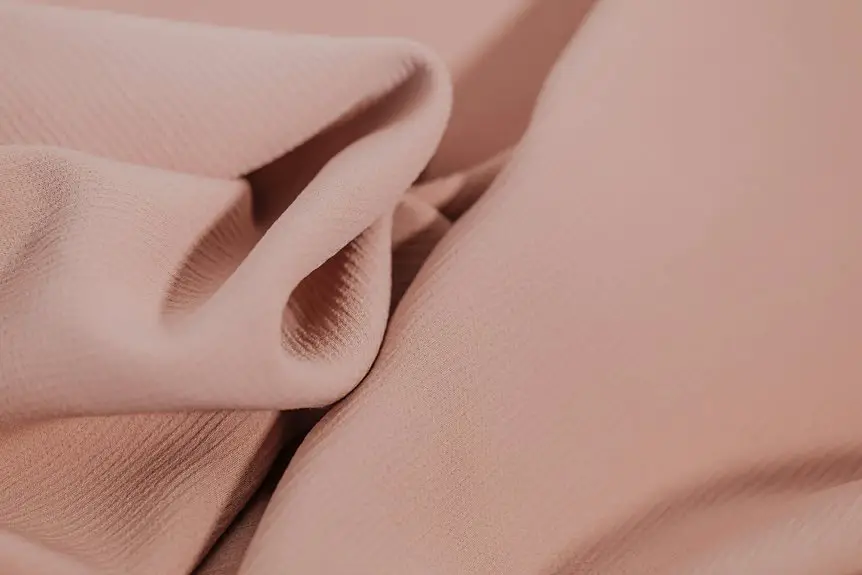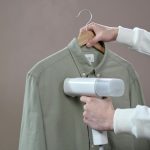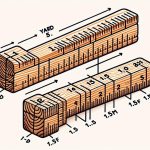To get wrinkles out of microfiber fabric, use a steam iron on a low heat setting or a handheld steamer. Mist the fabric lightly with water for better results. Hold the steamer upright and keep it about six inches away, moving it in a downward motion. Avoid excessive pressure when ironing. Regular maintenance, like washing gently and storing properly, can prevent wrinkles. Stick around to discover more tips for keeping your microfiber looking great!
Table of Contents
Key Takeaways
- Use a handheld steamer or steam iron on a low heat setting to effectively remove stubborn wrinkles from microfiber fabric.
- Lightly mist the fabric with water before ironing to enhance wrinkle removal and avoid heat damage.
- Employ a pressing cloth between the iron and microfiber to protect delicate fibers during ironing.
- Regularly air dry and gently smooth out wrinkles by hand after washing to maintain fabric integrity.
- For wrinkle prevention, store microfiber items in a cool, dry place and avoid heavy items that may distort their shape.
Understanding Microfiber Fabric
Microfiber fabric is a popular choice for upholstery, clothing, and cleaning products due to its softness and durability. This synthetic material, made from ultra-fine fibers, offers a unique blend of comfort and practicality.
Microfiber fabric combines softness and durability, making it an excellent choice for upholstery, clothing, and cleaning products.
You’ll find that microfiber is highly absorbent and dries quickly, making it perfect for cleaning tasks. It’s resistant to stains and fading, which means your items will maintain their appearance longer.
When it comes to upholstery, microfiber provides a cozy feel while being easy to maintain. Its lightweight nature makes it easy to handle, too.
However, it’s essential to understand that microfiber can be prone to wrinkling if not cared for properly, so knowing how to treat it correctly is vital for keeping it looking its best.
Tools Needed for Wrinkle Removal
To effectively remove wrinkles from microfiber fabric, you’ll need a few essential tools at your disposal.
First, grab a steam iron or a handheld steamer, as steam works wonders on stubborn wrinkles. If you don’t have a steamer, a regular iron with a low heat setting can also do the job, but be sure to use a pressing cloth to protect the fabric.
Next, keep a spray bottle filled with water handy; lightly misting the fabric can help relax the fibers.
Finally, consider having a lint roller on hand to pick up any debris or lint that may cling to your microfiber.
With these tools ready, you’re set for a successful wrinkle removal session!
Effective Methods for Removing Wrinkles
When it comes to getting wrinkles out of microfiber, you’ve got several effective methods at your disposal.
Steaming can work wonders, while proper ironing techniques will keep your fabric looking sharp.
Plus, understanding drying methods can help prevent those pesky wrinkles from forming in the first place.
Steaming Techniques for Wrinkles
If you’re looking for an effective way to smooth out wrinkles from microfiber fabric, steaming is one of the best methods you can use.
To start, fill your steam cleaner or iron with water and set it to the appropriate temperature. Hold the steamer a few inches away from the fabric to avoid direct contact, which can damage the fibers. Glide the steam in gentle, sweeping motions over the wrinkled areas.
For stubborn wrinkles, lightly tug the fabric while steaming to help it relax. You can also hang the microfiber item in your bathroom while taking a hot shower; the steam will naturally help release the wrinkles.
Once finished, allow the fabric to cool before using or storing it.
Ironing Guidelines for Microfiber
Steaming is a fantastic way to tackle wrinkles, but sometimes you might prefer using an iron for a more direct approach. When ironing microfiber, it’s essential to use the right settings to avoid damage. Here are some guidelines:
| Tip | Details |
|---|---|
| Use Low Heat | Set your iron to a low temperature. |
| No Steam | Avoid using steam; it can damage fibers. |
| Iron Inside-Out | Turn the fabric inside-out to prevent shine. |
| Quick Passes | Move the iron quickly to avoid overheating. |
| Keep Distance | Maintain a small gap between the iron and fabric. |
Drying Methods to Prevent Wrinkles
To keep your microfiber fabric looking fresh and wrinkle-free, drying methods play an essential role. Start by removing your microfiber items from the washing machine promptly to prevent wrinkles from setting in.
If you’re using a dryer, select a low heat setting to avoid damaging the fibers. Toss in a couple of clean tennis balls or dryer balls to help fluff the fabric and reduce creases.
Alternatively, air drying is a great option. Hang your microfiber items on a clothesline or a drying rack, making sure to smooth out any wrinkles with your hands as you go.
Whichever method you choose, always verify your microfiber is completely dry before storing it away to maintain its softness and prevent mildew.
Tips for Ironing Microfiber
While ironing microfiber might seem challenging due to its delicate nature, you can achieve great results with the right approach.
Start by setting your iron to a low heat setting, typically around 300°F or the synthetic fabric setting. Always use a pressing cloth between the iron and the fabric to prevent damage.
Lightly mist the microfiber with water for better results, but don’t soak it. Gently glide the iron over the surface without applying too much pressure, as this can flatten the fibers.
Focus on small sections at a time for more effective wrinkle removal. Finally, make sure you don’t leave the iron in one spot too long to avoid scorching.
With these tips, you’ll keep your microfiber looking fresh and smooth!
Maintaining Smooth Fabric
To keep your microfiber fabric looking smooth, it’s essential to adopt regular washing techniques that preserve its integrity.
Proper drying methods can prevent wrinkles from forming, while using fabric softeners can enhance its softness and reduce static.
Regular Washing Techniques
Since regular washing is essential for maintaining the smooth texture of microfiber fabric, it’s important to adopt the right techniques.
Follow these tips to keep your microfiber looking great:
- Use cold water to prevent fibers from breaking down.
- Choose a gentle cycle to minimize wear and tear.
- Avoid fabric softeners, as they can clog the fibers and reduce softness.
- Wash with similar colors to prevent dye transfer.
- Air dry or tumble dry on low heat for best results.
Proper Drying Methods
Choosing the right drying method is essential for keeping microfiber fabric smooth and wrinkle-free. After washing, shake out the fabric to help release any existing wrinkles.
If you’re using a dryer, opt for a low heat setting, as high temperatures can damage microfiber. Toss in a few clean tennis balls or dryer balls; they’ll help to fluff the fabric and prevent clumping. Always remove the fabric promptly once the drying cycle ends to avoid wrinkles setting in.
If you prefer air drying, hang the microfiber items on a clothesline or lay them flat on a clean surface. This way, you can maintain their shape and smoothness without the risk of heat damage.
Fabric Softener Benefits
Using fabric softener can greatly enhance the smoothness of microfiber fabric.
It not only helps reduce wrinkles but also makes the fabric feel softer against your skin. By incorporating fabric softener into your laundry routine, you’ll enjoy several benefits that maintain the quality of your microfiber items.
- It prevents static cling, reducing the likelihood of snagging.
- Softener helps repel dirt and stains, making cleaning easier.
- It can extend the lifespan of your microfiber by keeping fibers intact.
- You’ll experience enhanced breathability, improving comfort.
- It adds a pleasant scent, leaving your fabric smelling fresh.
Preventing Wrinkles During Storage
To prevent wrinkles from forming in microfiber fabric during storage, it’s vital to take a few simple steps.
First, always verify the fabric is clean and dry before storing it. Fold it neatly instead of cramming it into a tight space, as this will help maintain its shape.
Ensure microfiber is clean and dry before storage, and fold it neatly to preserve its shape.
Use breathable storage bags or boxes to keep moisture away, which can lead to wrinkles. If you’re stacking items, place heavier ones at the bottom, avoiding pressure on delicate microfiber.
Additionally, consider using tissue paper or fabric sheets between layers to minimize friction.
Finally, store microfiber items in a cool, dry area, as heat can cause fibers to become misshapen, leading to unwanted wrinkles when you next use them.
Using a Steamer for Wrinkle Removal
While a steamer can be an effective tool for removing wrinkles from microfiber fabric, it’s vital to use it correctly to avoid damaging the material.
To get the best results, follow these tips:
- Always hold the steamer upright to prevent water from dripping onto the fabric.
- Maintain a distance of about 6 inches between the steamer and the microfiber.
- Use the lowest heat setting to avoid scorching or melting the fibers.
- Move the steamer in a downward motion to smooth out wrinkles without crushing the fabric.
- Test a small, inconspicuous area first to verify the heat won’t harm the microfiber.
The Role of Dryer Balls and Tennis Balls
If you want an effective and natural way to remove wrinkles from microfiber fabric, dryer balls and tennis balls can be your best friends in the laundry room.
Toss a few of these into the dryer with your wrinkled microfiber items. As they bounce around, they create space between the fabric, allowing hot air to circulate more evenly. This action helps to loosen the fibers and reduce wrinkles without the need for harsh chemicals or excessive heat.
Plus, dryer balls can help shorten drying time, making your laundry routine more efficient. Just remember to keep an eye on the temperature setting to avoid damage.
With this simple trick, you’ll have wrinkle-free microfiber in no time!
Regular Maintenance for Microfiber Items
Maintaining your microfiber items regularly not only prolongs their lifespan but also keeps them looking fresh and wrinkle-free.
Regular maintenance of your microfiber items extends their lifespan and ensures they remain fresh and wrinkle-free.
To achieve this, follow these simple care tips:
- Wash gently: Use a mild detergent and wash on a gentle cycle to avoid damage.
- Avoid fabric softeners: They can coat the fibers, reducing their effectiveness.
- Air dry: Hang or lay flat your microfiber items to dry, preventing heat damage from dryers.
- Use a lint roller: Regularly remove dust and debris to keep surfaces clean and soft.
- Store properly: Keep your microfiber items in a cool, dry place to prevent wrinkles and maintain their shape.
Frequently Asked Questions
Can I Use Fabric Softener on Microfiber Items?
Think of microfiber as a delicate dance partner; you wouldn’t want to weigh it down with fabric softener. It can reduce its absorbency and softness, so it’s best to skip the softener altogether.
How Often Should I Wash Microfiber Fabric?
You should wash microfiber fabric every three to six uses, depending on how dirty it gets. Regular cleaning helps maintain its effectiveness and prolongs the life of the fabric, keeping it fresh and functional.
Is It Safe to Bleach Microfiber Fabric?
If you accidentally spilled bleach on your microfiber couch, you’d notice discoloration. It’s best to avoid bleach altogether; it weakens fibers and damages the fabric’s texture. Stick with mild detergents for cleaning instead.
Can I Dry Clean Microfiber Items?
Yes, you can dry clean microfiber items, but it’s best to check the care label first. Some microfiber fabrics may be sensitive to certain chemicals, so a gentle cleaning method is often recommended.
What Is the Lifespan of Microfiber Fabric?
Microfiber fabric typically lasts about 5 to 10 years, depending on usage and care. You’ll love its durability, as it’s resistant to stains and wear, making it a great choice for everyday items.
- What Is Pochampally Ikat? a Journey to India’s Silk City - June 27, 2025
- What Is Pochampally Ikat? a Journey to India’s Silk City - June 27, 2025
- What Is Pochampally Ikat? a Journey to India’s Silk City - June 27, 2025






